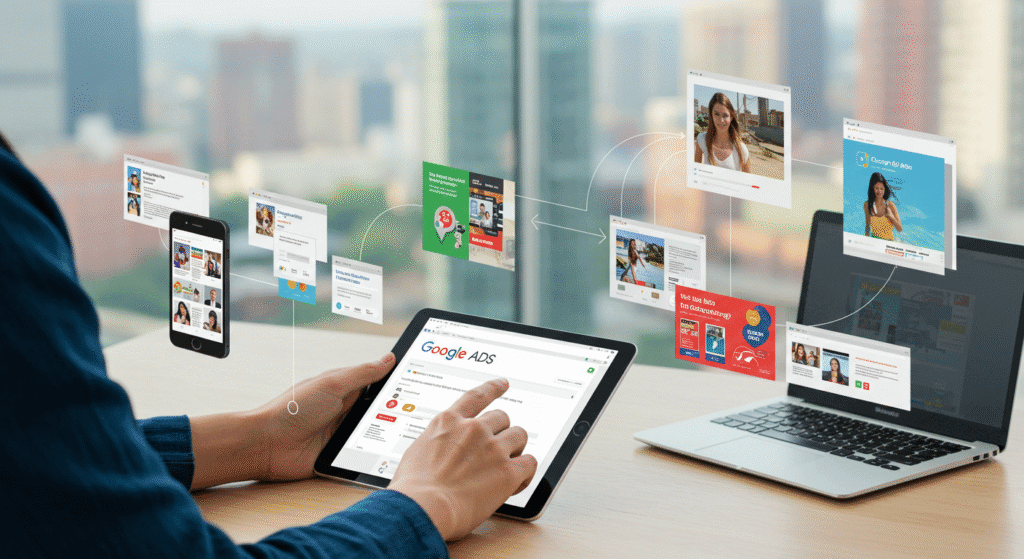Getting visitors to your web pages can feel like trying to attract a flock of pigeons with breadcrumbs in a park. You know they’re out there, but how do you get them to come over? Fortunately, there are some clever strategies that can help draw in the crowds. Let’s dive into these internet traffic strategies that will have visitors flocking to your site faster than you can say “free pizza!”
Top Takeaways and Key Concepts
→ Optimize for mobile users to ensure a smooth, frustration-free browsing experience.
→ Promote content on social media to reach new visitors quickly and organically.
→ Use email marketing consistently to drive repeat traffic and build loyalty.
→ Create valuable shareable content to earn backlinks and expand visibility.
→ Monitor analytics regularly to adjust strategies and improve site performance.
Summary of This Article
Getting more visitors to your website isn’t about luck—it’s about using smart, practical strategies that actually work. This article breaks down how to understand your audience, optimize for search engines, and take advantage of social media, email marketing, and paid ads. You also learn why creating valuable content and staying consistent can steadily build your traffic over time. Most importantly, the article shows you how to use analytics to guide your decisions so you’re always moving in the right direction. By applying these tips, you can turn your website into a lively, well-trafficked destination instead of a digital ghost town.“`
Contents of This Page
Understanding Your Audience: The Key Ingredient

First of all, it’s helpful to know who is viewing your website if you want them to come back. If you were throwing a party, you wouldn’t serve sushi rolls at a BBQ unless you wanted half of your guests to rush to the nearby taco truck! So, what do the people that might come to your site like? What makes them worry about their lives at night?
Making buyer personas is a great method to find this out. These pretend pals stand for distinct groups of people in your audience based on their age, gender, and hobbies. Honestly, I think it’s interesting, like making character profiles for a book! Once you have these personalities in mind, make sure your content and marketing plans are made just for them.
Being aware of trends in your field is like having a superpower when it comes to making content. It’s really important! You’d feel fairly good if you walked into a party and immediately knew what everyone was talking about. Your blog or website is the same. If you can join in on current conversations, you’ll not only get more visitors, but you’ll also keep them interested.
So, how do we stay up to date? Tools like Google Trends are great for this. Just type in a term or phrase that has to do with your niche, and there you go! You can observe how people’s interest in that subject has changed over time. Is it getting bigger? Are people really into tie-dye clothes again? This program helps you find possible chances before they become popular. I mean, who wouldn’t want to be ahead of the game?
Then there are social media sites, which are like busy hives where new trends come up faster than I can complete my morning coffee! Twitter and Instagram are two examples of platforms that show what’s popular right now. You may easily find out what topics are hot by following relevant hashtags or influencers in your profession. If eco-friendly products are popular and everyone is talking about their favorite brands that are good for the environment, it could be time to join in!
But here’s where it gets even more interesting: don’t just write about these trends because you want to be part of the trend train! Think carefully about how they connect to what your audience wants and needs. It’s great to produce an article about “The Best Eco-Friendly Products,” but what’s the point if it doesn’t connect with your audience or address their problems? Instead, go deeper. You may talk about why these items are important or share your own story about making eco-friendly decisions.
And since we’re talking about those blogs you’ve been putting off… This could be the perfect time! Don’t let fear stop you from talking about things that interest you and your audience. If being eco-friendly is getting a lot of attention, think about writing a fun article that gives useful suggestions on how to live sustainably while also making people laugh (since who doesn’t like to learn something new while laughing?).
Keeping up with trends isn’t just helpful; it’s necessary if you want to write material that readers will find interesting. Use your investigative skills to find new topics in your area and get ready to write content that is both interesting and useful!
Search Engine Optimization (SEO): The Secret Sauce

Let’s talk about SEO now, because this is where the magic happens! When you optimize your content for search engines, it’s like handing it a VIP ticket to the internet’s biggest concert. Do you want people who type “best chocolate chip cookie recipe” into Google to go to page 20 or directly to the top?
Keywords are the magical words that people type into search engines when they are looking for anything. Start optimizing by focusing on these. Use SEMrush or Ahrefs to locate keywords that are popular and have to do with your topic. But don’t just toss them around randomly; spread them out naturally in your writing so that readers don’t feel like they’re reading a robot’s journal.
Think of title tags and meta descriptions as your digital movie trailers when you want to make a web page that people will want to read. Really! These things allow people know what to expect when they click on your link, just like a trailer offers you a taste of the narrative and excitement of a movie. So, if your title tag is imprecise or lacks pizzazz, you might as well be presenting viewers a black-and-white silent film. Not very appealing, is it?
Let’s talk about why these parts are so crucial now. Your core keyword should be in a clear title tag, but it should also sound natural and interesting. It’s the perfect mix of interesting and educational, like saying “Epic Pizza Recipes for Cheese Lovers” instead of just “Pizza.” Who wouldn’t want to click on that? This short piece shows up in search engine results, so make it count!
Next up are meta descriptions. You may think of these as the nice voiceover that informs people why they should watch the movie (or read your page). They should give a short summary—about 150–160 characters—that not only describes the content but also tells people what to do next. For example, “Discover mouth-watering pizza recipes guaranteed to impress!” makes people want to know more and click on the link.
We also can’t forget about those pictures, though! Your visitors may find them pretty, but optimizing them is important for keeping your website fast. People will leave your site faster than I can say “buffering” if you have high-resolution photographs that take a long time to load. Compressing file sizes makes ensuring that images improve the user experience instead of getting in the way. But that’s not all; it’s also very vital to provide descriptive alt text! Alt text tells search engines what a picture is about and makes your site easier to use for people who can’t see it.
If someone can’t see the picture but wants to know what’s there (maybe they’re trying to decide if it’s worth their time), decent alt text gives them some background. How about saying “Delicious pepperoni pizza topped with fresh basil” instead of “IMG_12345”? It helps with SEO and offers value!
In the end, using optimized title tags, interesting meta descriptions, and well-optimized images all together makes for a smooth experience for visitors and helps you move up in search results. It’s all about making sure that everything works together well, like how a meal comes together in the oven. So, as you update existing pages or make new ones, keep in mind that clarity and optimization are two of the most crucial things you can do to get traffic to your site.
Leverage Social Media: Share the Love

When it comes to sharing… Another great way to generate traffic is through social media! It’s not only about publishing cat videos (which I love); it’s also about finding potential visitors where they spend time online.
Making interesting postings that connect back to your website is like asking your friends around for pizza and telling them where the best pizza is. It’s all about getting them interested and providing them a cause to stay. It’s a win-win situation when you write blogs that are both fun to read and bring people to your site. Your social media is like a big billboard. If it’s bright enough, people will want to stop and see what you’re offering!
Now let’s speak about pictures, because who doesn’t appreciate graphics that capture the eye? A well-made picture can stop someone from scrolling faster than a cat video! Use vibrant colors, big typefaces, or even funny drawings that show off your brand’s individuality. But here’s the catch: always make sure that these pictures are related to the information you’re linking to. If you’re sharing an article about “The Best Pizza Toppings,” don’t just post a random photo of a cat in sunglasses. Unless that cat has some really fancy toppings on its pizza!
Using stories on social media sites like Instagram and Facebook may be a game changer when it comes to connecting with your audience. Stories are a great way to show people what goes on behind the scenes of your work or to provide them short suggestions that are relevant to your specialty. They go away after 24 hours, which makes me feel like I have to act quickly, like when I see my favorite snack on sale at the store! You may also ask questions and take polls on these sites, which lets you talk directly to your fans and get quick feedback.
And we can’t forget about Facebook Live! Honestly, going live is like being in the front row of a private concert. You get to show off what you do best while talking to people in real time. This human touch helps build rapport, whether it’s showing how to make that delicious recipe from your most recent blog article or answering inquiries about what’s hot in your niche. People like honesty; they want to feel like they are more than simply a number in the follower count.
Picture turning those people who only read through your posts into loyal followers who can’t wait for the next one! When you think about it, it’s kind of magical: adding a little bit of personality to useful material can turn those who just watch into people who participate in your community. So the next time you write a message on social media or plan a live event, keep in mind that engagement is the most important thing! If you make it more entertaining and participatory for your audience, they are more likely to come back for more, and maybe even bring their friends with them!
You might also want to work with influencers in your field. A shoutout from someone whose fans trust could bring a lot of attention to your site!
Email Marketing: The Oldie but Goodie

Email marketing is still a great way to reach people, so let’s not forget about it. At first, building an email list might seem as boring as watching paint dry, but trust me, it will pay off big time in the long run.
To get them to sign up for your email list, offer them something useful, like a free eBook or exclusive discounts. When you have all those addresses in a row, make interesting emails that provide relevant information and links to new content on your website.
And here’s a hint for professionals: make those emails personal whenever you can! It’s like adding a little magic to your communication, really. When you get an email that seems like it was written particularly for you, doesn’t it make you feel good? People really like it when brands talk to them directly instead of sending out generic communications that make them feel like just another number on a spreadsheet. It’s like getting a handwritten message instead of a mass-produced postcard: one makes you feel warm and fuzzy, and the other is just cold and corporate.
So, how do you make it more personal? First, say their name! It seems easy, but seeing “Hey [Name]” at the start of an email makes it feel more welcoming right away. You might even go further by talking about things that have happened in the past or things that have been bought. For example, if someone bought running shoes from you last month, why not send them an email with suggestions for matching accessories or recommendations on how to get the most out of their new shoes? This indicates that you care about their experience beyond just earning a transaction and that you remember them.
Also, dividing your audience into groups might be really helpful. Instead of delivering the same message to everyone on your list, divide your contacts into smaller groups depending on their interests or actions. If someone joined up for your newsletter because they enjoy cooking, make sure the material is entirely about recipes and kitchen tips for those who love food. This kind of personalization not only increases engagement, but it also develops trust with your audience because they can see that you know what they want.
Don’t forget about the time, too! Sending tailored emails at the right times can make a big difference in how many people open them. For instance, if someone just looked at vacation packages on your site but didn’t book anything, send them a nice reminder with great deals for their chosen destination. It’s like saying, “Hello!” We saw that you’re interested in this great vacation spot—let us help you get there!
And speaking of excitement, utilize interesting subject lines! Try something more interesting than “Monthly Newsletter,” like “Your Exclusive Sneak Peek Inside Our Summer Specials!” A good subject line makes people want to click through instead of deleting the email as soon as I finish my coffee.
Last but not least, always ask for feedback! Find out what kinds of content your subscribers want to see more of or how often they want to hear from you. People are considerably more likely to stay interested and devoted over time if they feel like they are helping to shape the discourse.
In short, making emails personal is more than just a nice thing to do; it’s necessary for making connections with your audience that last. So get to work and write messages that speak to people instead of sending out the same old messages that wind up in the digital trash!
Utilize Content Marketing: Quality Over Quantity

Content marketing isn’t just tossing spaghetti against the wall and seeing what sticks; it takes planning and skill! To get visitors that care more about substance than fluff, you need to make high-quality blog entries, videos, infographics, and other content.
Write articles that are helpful or fun and relate to the interests of your audience. How-to guides are really helpful because they answer specific issues and show that you know a lot about your field.
And this is where consistency comes in: posting new content on a regular basis keeps people coming back for more and also helps your SEO results! If you simply give a plant a little water once in a while, it will wilt and die. But if you pay attention to it on a regular basis, it will develop strong and do well. The same rule goes for your blog or website!
Not only are you giving your readers what they want by writing often, but you’re also letting search engines like Google know that your site is current and useful. This can help your material show up higher in search results, which means more people will probably find it. Who wouldn’t want their ideas to be at the top of search results? It’s like being in the front row of a concert instead of the nosebleed area!
Now, let’s speak about what the word “regularly” really implies. For some people, that could mean writing a new post every week, while for others, it could mean writing one every other week or even once a month. The most important thing is to establish a rhythm that works for you and stay with it. I understand that life can be busy with job, family, and binge-watching the latest Netflix show (guilty as charged), so it can be hard to keep up with making content. But if you plan ahead, you won’t have to rush at the last minute when you’re staring at your screen and not knowing what to write.
Making an editorial calendar is a good way to get things done. This handy tool lets you plan out your subjects far in advance, so you never have to rush to come up with ideas at the last minute. You can write down themes for each month or unique events that might give you ideas for timely material, such holidays or seasonal trends. Then you can fill in particular article ideas based on those themes. Believe me, this will make things easier for you!
Also, don’t be afraid to use old content again! If you have a great blog article from last year that still has useful information but might need to be updated or refreshed, think about turning it into an infographic or perhaps a short movie. This way, you’re getting the most out of what you already have while also giving your audience new forms that fit their needs.
Also, it’s fascinating because interacting with your readers is a big part of staying consistent! Ask people to comment and talk about your content. This not only builds community, but it also shows you what topics your audience is most interested in. Their inquiries and comments will motivate you, making it easier than ever to come up with fresh ideas.
Lastly, keep in mind that quality should never come after quantity. It’s important to post regularly, but make sure that each piece is useful and not merely filler to meet deadlines. Readers are smart; they can smell fluff faster than I can complete my coffee in the morning! So make sure you write items that are both instructive and fun that really connect with people.
In short, consistency is more than just looking good; it’s important for building relationships with both readers and search engines. If you promise to update your site regularly with interesting content that you take the time to write, you’ll build an audience that can’t wait for each new chapter you post!
Paid Advertising: Fast-Track Your Way In

Paid advertising could be a good idea if you want results faster (and who doesn’t?). Platforms like Google Ads and Facebook Ads let you run targeted ads that are only seen to people who are interested in what you have to offer.
Of course, keep an eye on your budget—no one wants their ad spending to grow out of hand faster than my last attempt at making dinner! Begin with a few modest ads and see how they do before expanding successful campaigns depending on performance data.
Remarketing ads can be very effective since they target people who have already been to the site but didn’t buy anything the first time. It’s like saying, “Hey there!” Do you remember us? It’s a soft push that reminds people who could be interested in your product without being too pushy. You know how you can smell those tasty pastries from a bakery and then keep walking? But later, you remember about that smell and decide to go back for a treat? That’s the wonder of remarketing!
So, how does all of this work? Remarketing advertising let you follow people across the internet with ads that are tailored to them when they visit your website and look at certain products or pages but don’t buy anything or do anything. Picture them looking at their favorite social media site or reading articles online when they encounter an ad for the very thing they were looking at on your site. Fate is giving them another chance! This method maintains your brand fresh in their minds and makes it more likely that they will come back and buy anything.
Not all remarketing techniques are the same, to be fair. The most important thing is to make sure your adverts are interesting and relevant. People don’t want to see the same dull ad over and over again. It’s like being caught in an elevator with someone who only speaks about their cat’s eating habits. Try changing up your content instead! Show them different things they’ve looked at or let them know about special deals or discounts that are only available to them. Being a little creative can get people’s attention.
Also, timing is important! Sending these reminders too soon after their visit could feel like someone is watching you while you try to decide between chocolate chip and oatmeal raisin cookies at the bakery counter. But if you wait too long, they can forget about you completely. Finding that ideal spot can substantially boost conversion rates.
Another intriguing thing is to divide your visitors into groups based on how they act on your site. For example, if someone put things in their basket but didn’t finish checking out, you might make advertising just for them that remind them about those things and maybe even give them a discount code as an incentive! It’s like saying, “Hi there!” We see you forgot something, so here’s 10% off just for you! These kinds of personal touches can change people who are just looking into people who are ready to buy.
And don’t forget about analytics! It’s really important to keep an eye on how well your remarketing ads are doing. Are people clicking on those ads? Are they becoming customers after seeing them? You can improve your method over time by looking at these metrics to make sure it works as well as possible. To keep giving value, you need to figure out what your audience likes.
It’s interesting—and I really mean it—remarketing doesn’t have to be restricted to only items; it can also be used for services or content! If someone read one of your blog entries but didn’t sign up for your newsletter or read more articles on the same topic, why not remind them? A basic ad that shows comparable topics could get people to look at more of what you have to offer.
In conclusion, remarketing ads give people a second chance in a polite way that doesn’t make them seem needy or annoying. You’re not just getting more sales by reminding potential consumers of their past interests in a creative way and making sure that each connection is relevant and personalized. You’re also creating relationships that will make them loyal over time! So go ahead and take those second chances. They could lead to great things for both of you!
Monitor Analytics: Adjusting Course Along the Way

Last but not least, you need to keep an eye on your analytics. They are like a compass that will help you find your way across unknown waters. You may easily make changes when you use tools like Google Analytics to keep an eye on how visitors act.
Pay special attention to metrics like bounce rates (how quickly visitors depart), average session time (how long people stay), and conversion rates (the holy grail!). By looking at this data, you can see what’s doing well and what needs to be fixed. And believe me, no one likes yelling into an empty void!
You could find that some themes resonate more than others, or that particular times get more involvement across platforms. All of this is useful information to keep in mind for the future!
In conclusion, there isn’t one magic method for encouraging people to visit your website. Instead, you need to carefully combine different strategies and be willing to change them as needed until you succeed!
Suggested Resources:
10 Proven Strategies for Increasing Website Traffic
https://www.searchenginejournal.com/increase-website-traffic/
The Ultimate Guide to SEO For Beginners
https://moz.com/beginners-guide-to-seo
How To Build a Successful Email List
https://neilpatel.com/blog/email-list-building/
Social Media Marketing Tips for Small Businesses
https://www.hubspot.com/social-media-marketing-tips
Understanding Google Analytics Basics
https://analytics.google.com/analytics/web/provision/#/provision
Frequently Asked Questions
How can I attract more visitors to my web pages?
Using SEO techniques, social media promotion, email marketing, and valuable content helps draw consistent, targeted traffic.
Why is understanding my audience important for traffic growth?
Knowing your audience allows you to create content and strategies that meet their interests, increasing engagement and visits.
How does SEO improve website traffic?
SEO boosts visibility in search results by optimizing keywords, titles, meta descriptions, and images, attracting more organic visitors.
What role does social media play in driving traffic?
Social media helps promote content, engage with users, and expand reach, sending interested visitors back to your website.
Is email marketing still effective for generating traffic?
Yes, targeted and personalized email campaigns encourage return visits by sharing new content, offers, or helpful resources.
Can paid advertising help increase traffic quickly?
Paid ads on platforms like Google or Facebook provide immediate visibility and can rapidly attract targeted traffic when managed well.
Why should I monitor website analytics regularly?
Analytics reveal user behavior, top-performing content, and areas needing improvement, helping refine traffic strategies over time.

Kevin Collier is a seasoned writer and technology enthusiast with a passion for exploring the latest industry trends. With a background in digital marketing and content creation, he brings insightful perspectives to imhits.com on emerging technologies, innovations, and their impact on everyday life. When he’s not writing, Kevin enjoys experimenting with new gadgets and sharing his knowledge with fellow tech aficionados.





